Outdoor digital signage provides an excellent way for communicating with substantial numbers of people, and this is never more important than at sports stadiums. Managing a sports stadium presents multiple challenges, especially when it comes to presenting visitors with information and digital signage has a clear role to play in delivering effective communication across a sizeable estate.
The Sports Stadium Environment
A sports stadium has three clear environments where digital signage is required.
First, the fully outdoors environment where large and small signage is exposed to the elements. This signage will be subject to temperature, rainfall and wind extremes.
Second, the internal environment in bars, restaurants, sponsored accommodation and management space where the normal constraints of power supply and connectivity require consideration.
Third, the semi-external spacing that is exposed to temperature and humidity from the outside environment without being completely exposed and this will include public-access routes into and out of the stadium.
The Conventional Way
Conventional approaches to displaying information in sports stadiums involve the use of billboards of varying sizes that allow static messages to be displayed on posters. When presented in this way the display of information is relatively cheap to administer, but it also presents challenges. Its static nature means that changes to content can only be accommodated by replacing the signage itself which can be costly at best and will always be slow to implement.
The revenue generating opportunities created by mechanisms such as billboards are also equally limited due to the static nature of the medium. The cost of refreshing materials and the speed with which new materials can be displayed is a traditional barrier to sponsors taking up opportunities at sports stadiums.
Once installed static displays of this nature are particularly vulnerable to the effects of the environment. Aside from the impact of wind and rain, pollution in the environment can make signage become discoloured and even today’s UV proof inks will not stop art work that has been in place for a period from fading.
The Digital Signage Way
Sports stadiums are ideal places for digital signage because they have multiple locations where there is a requirement to present information and for opportunities to engage with visitors and fans. The information presented can be about services on site such as food, drink and public conveniences; it can be about rival sporting events where the result may affect teams and organisations competing. There is also a need for public information messages about exit routes and public transport links outside of the stadium and when emergency evacuation is requited digital signage can be an important part of safety procedures.
Sports fans famously love to be involved with their team or favourite player and dynamic screens where relevant content is added and updated will significantly improve their experience. How the competition is doing at any given moment can easily be communicated to the entire stadium using media in a variety of locations.
Traditionally, maintenance messages to do with facilities and services occupy dead space where as digital signage can be used to communicate the same maintenance messages alongside revenue generating corporate sponsorship messages. An integrated digital signage system will allow for messages of multiple kinds to be played concurrently from one device.
Integrated digital signage systems are ideal for use within sports stadiums because they allow messages of many different types to be displayed quickly and easily. Information displayed tends to be in the following categories:
Local information – all local news and weather and any information such as fire exits and public transport
Internal information – all messages from the stadium to paying visitors that affect the quality of their visit.
Menu information – information about revenue generating products and services such as food and drink that are available on site.
Advertising – corporate sponsorship is an important revenue stream for any sports stadium
Brand building – increasing the reach of the stadium’s owners own brand is a long term commitment that requires attention.
Influencing customer behaviour – making sure that traffic flow around the stadium is managed at all times to ensure public safety and to maximise dwell time around retail outlets in the stadium.
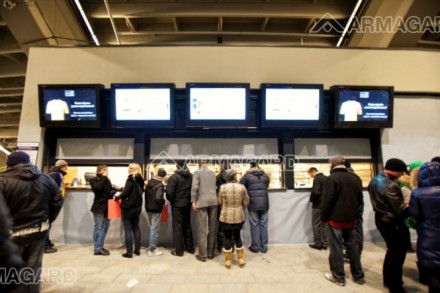
Digital signage can be broken into three types
Fixed digital signage that is a permanent fitting in the stadium, around competition areas and is used to provide instant feedback on the action taking place. Signage of this type should be used to create and maintain an atmosphere to improve the experience of fans attending events, which will keep them wanting to come back and attend future events.
Fixed, permanent single screen LED displays used for providing public information.
Mobile single screen LED displays for public information that may be changeable and hence not require installation of a permanent screen.
Large events presented at sports stadiums frequently attract television companies wanting to provide quality programming for their audiences. Access to these television audiences is something that can readily be offered to corporate clients who wish to take advantage of pitch side LCD displays to communicate their messages to fans onsite and watching from home. Where these facilities are part of an integrated solution, it is possible to offer advertisers the ability to update and amend advertising content at very short notice.
Armagard Products
Since opening in 1994 Armagard has established a worldwide reputation for designing and supplying protective environments for computer equipment, which makes their products particularly useful in the demanding environment found in sports stadiums.
Armagard has a complete range of enclosures for LCD screens, plasma screens and Television screens that is designed to protect the screen from the effects of being installed externally. Engineered to the highest standards these enclosures allow displays to be housed behind shatter proof windows, which provide protection in the case of crowd disturbances. Each enclosure is manufactured from the highest quality steel and is designed to allow input and output cables to be routed seamlessly through the back of the screen. The enclosures also come with air filters that ensure the device is surrounded by fresh, clean air that will prolong its working life. Secure mounting brackets and locks also provide additional security against theft from external areas.
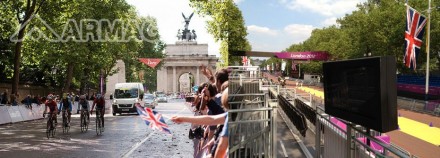
For indoor use, the Armagard range includes digital posters that come with a built in digital media player. Large screens (up to 32”) with bright LED displays will display messages presented on industry-standard memory cards that are simply plugged in and locked to avoid tampering. This signage is available as wall mounted or floor standing devices, which can be especially useful for temporary, event-based requirements where the normal digital facilities are insufficient.
Armagard products come with a reputation for quality that starts with the design and engineering process. Continual focus on customers’ requirements has seen Armagard be a world leader in developing protective environments for computer equipment, and you can find out more about the current range of products by calling 0121 608 7226.
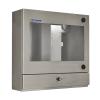
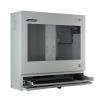
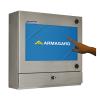
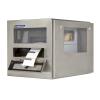
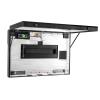
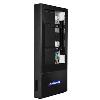
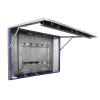
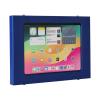
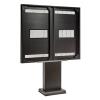
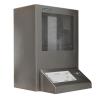






Comments are closed.